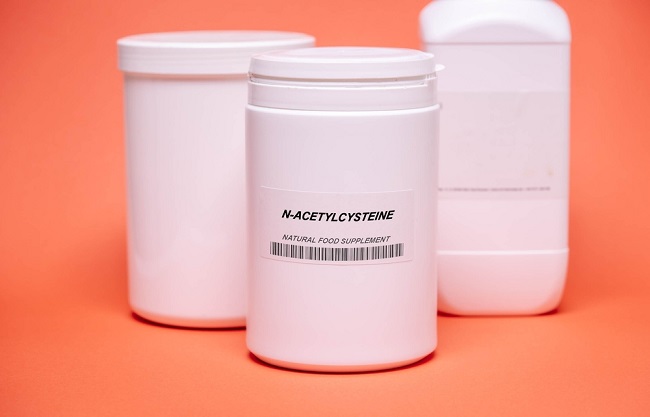Beberapa studi hewan mengindikasikan adanya manfaat N-acetylcysteine terhadap fungsi ginjal, sehingga pemberian pada pasien penyakit ginjal kronis diharapkan mampu mencegah progresi penyakit. Walau begitu, meski minat terkait penggunaan N-acetylcysteine pada penyakit ginjal kronis terus meningkat, belum ada kepastian mengenai efikasi dan keamanannya.
Patofisiologi penyakit ginjal kronis melibatkan stres oksidatif dan inflamasi. Studi menunjukkan adanya peningkatan penanda inflamasi pada pasien penyakit ginjal kronis. Di lain pihak, N-acetylcysteine merupakan komponen thiol dengan efek antioksidan yang dapat mengurangi produksi oksigen radikal bebas dan sitokin proinflamasi.[1,2]
Latar Belakang Potensi Manfaat N-Acetylcysteine Pada Penyakit Ginjal Kronis
N-acetylcysteine (NAC) dihidrolisis oleh NAC-deacetylating acylase, terutama di ginjal dan hati, menghasilkan sistein bebas yang kemudian diambil oleh hati melalui vena porta. Sistein ini digunakan bersama asam amino sulfur lain untuk sintesis glutathione (GSH), yang kemudian didistribusikan ke plasma.[2,3]
GSH berperan sebagai cellular reductant dan dalam redox-signaling, dengan keseimbangan GSH dan glutathione disulfide (GSSG) di mitokondria sel sebagai indikator status redoks. Ginjal mengonsumsi sekitar setengah dari GSH plasma yang diproduksi oleh hati, yang esensial bagi metabolisme aerobik tinggi sel tubulus ginjal. Namun, pada penyakit ginjal kronis tahap lanjut, terjadi gangguan sintesis dan deplesi GSH, yang berkontribusi terhadap disfungsi ginjal.[4-7]
Selain perannya dalam regulasi GSH, NAC juga bertindak sebagai methylglyoxal scavenger. NAC membantu menetralkan methylglyoxal, yang merupakan salah satu toksin uremik yang berkontribusi terhadap progresi penyakit ginjal kronis.[8-16]
Studi Preklinis Mengenai Kegunaan N-Acetylcysteine Pada Penyakit Ginjal
Efek proteksi NAC banyak berkaitan dengan kapasitasnya dalam menginduksi sintesis GSH, khususnya pada mitokondria. Dengan peningkatan GSH, penanda stres oksidatif jaringan ginjal seperti thiobarbituric acid reactive substance, advanced glycation end products, dan 8-hydroxy-2’-deoxyguanosine mengalami penurunan. Selain itu, studi turut menunjukkan adanya penurunan produksi reactive oxygen species ginjal di tubulus proksimal.[17,18]
Model pada hewan menunjukkan bahwa NAC secara langsung dapat merestorasi bioenergi dan biogenesis mitokondria melalui regulasi beta-oksidasi asam lemak yang menghindari akumulasi lipid dan lipotoksisitas. Selain itu, dua studi preklinis sama-sama menunjukkan bahwa NAC mampu menginhibisi apoptosis dan proses inflamasi. Kemampuan meregulasi proses inflamasi dan bioenergi mitokondria berkaitan erat pula dengan pencegahan pembentukan fibrosis jaringan.[19-22]
NAC juga ditemukan mampu menginhibisi fibrosis ginjal melalui jalur sirtuin 1-tumor suppressor p53. Studi preklinis lain juga mengonfirmasi bahwa NAC mampu memodulasi faktor transkripsi Nrf2 yang memicu respon antioksidasi pada sel-sel ginjal.[23,24]
Evaluasi Bukti Ilmiah Mengenai Penggunaan N-Acetylcysteine Pada Pasien Penyakit Ginjal Kronis
Dua uji klinis acak terkontrol menginvestigasi pemberian NAC oral 600 mg dua kali sehari sebagai terapi tambahan pada regimen renin-angiotensin-aldosterone system blockade selama 2 bulan pada pasien penyakit ginjal kronis derajat 1-3. Kedua studi ini tidak mendeteksi dampak NAC yang bermakna terhadap proteinuria.[30,31]
Beberapa studi lain menunjukkan hasil berbeda. Studi dengan non-kontrol grup yang menggunakan NAC oral 600 mg dua kali sehari selama 2 bulan mengindikasikan adanya penurunan signifikan pada tekanan darah sistolik dan proteinuria pasien penyakit ginjal kronis.[32]
Dalam studi lain yang menganalisis data sekitar 124.000 pasien penyakit ginjal kronis dengan periode observasi hingga 10 tahun, juga didapatkan penurunan risiko progresi penyakit ginjal kronis dan terapi dialisis pada pasien yang menggunakan NAC lebih dari 3 bulan, khususnya pada pasien wanita dan pasien dengan riwayat hipertensi.[33]
Sebuah penelitian lain mengevaluasi keamanan dan manfaat NAC pada penyakit ginjal kronis melalui tinjauan sistematik dan meta analisis terhadap 15 uji klinis dengan 768 pasien. Hasil menunjukkan bahwa NAC dapat meningkatkan fungsi ginjal yang diukur dengan laju filtrasi glomerulus (eGFR) dan kreatinin serum. NAC juga didapatkan efektif mengurangi peradangan, kadar homosistein, dan menurunkan kejadian kardiovaskular tanpa efek samping signifikan.[1]
Kesimpulan
Bukti terbatas mengindikasikan bahwa penggunaan N-acetylcysteine pada pasien penyakit ginjal kronis bermanfaat untuk memperbaiki berbagai parameter klinis fungsi ginjal, seperti proteinuria, tekanan darah, laju filtrasi glomerulus, dan kreatinin serum. Meski demikian, uji klinis acak terkontrol dengan skala lebih besar masih diperlukan untuk memastikan efikasi dan keamanannya, serta memandu dengan lebih pasti mengenai pemilihan pasien, dosis terbaik, dan durasi penggunaan.

















